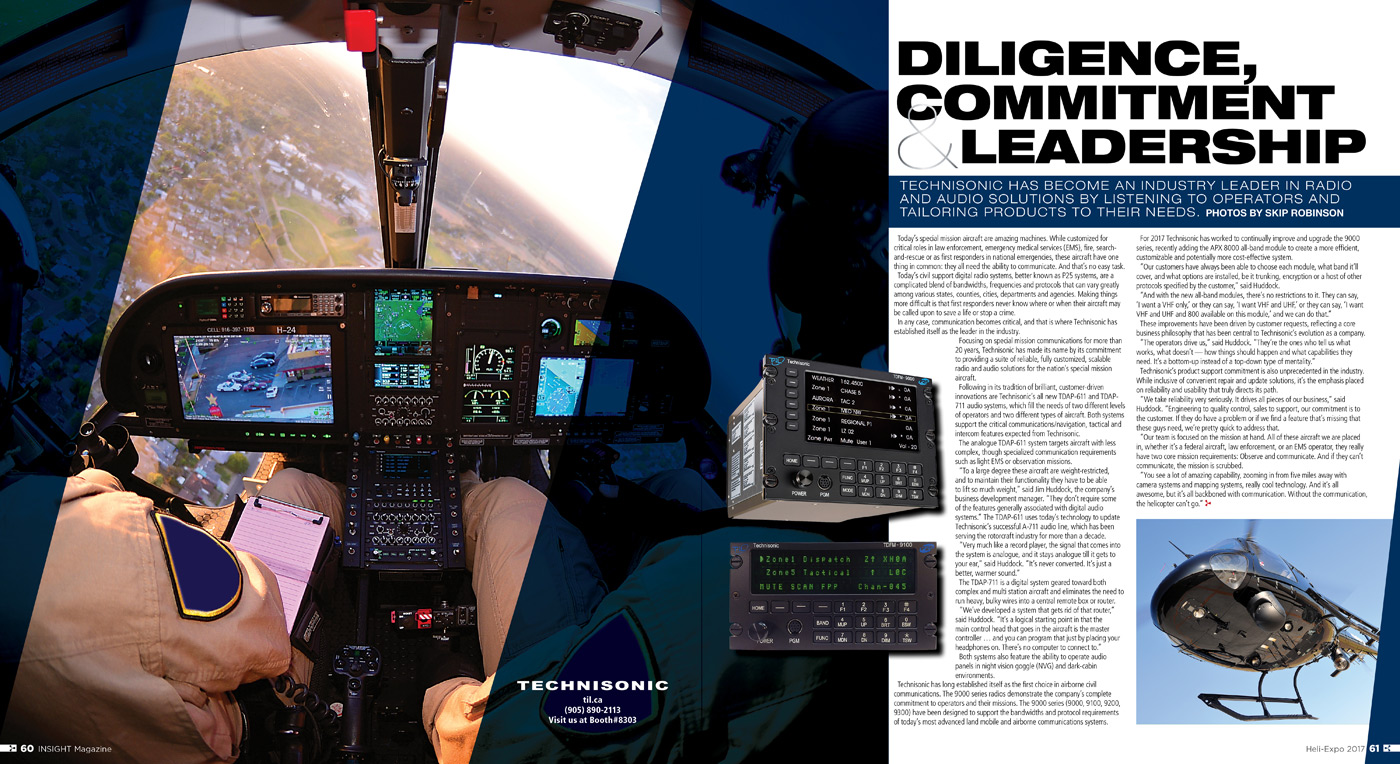Today’s special mission aircraft are amazing machines. While customized for critical roles in law enforcement, emergency medical services (EMS), fire, search-and-rescue or as first responders in national emergencies, these aircraft have one thing in common: they all need the ability to communicate. And that’s no easy task.
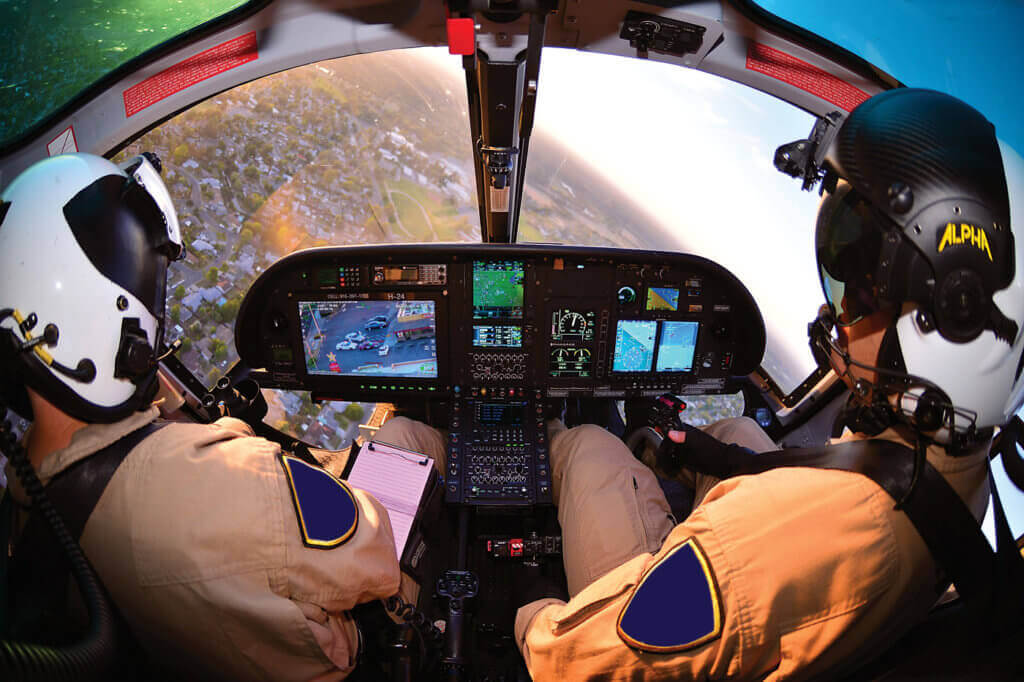
Today’s civil support digital radio systems, better known as P25 systems, are a complicated blend of bandwidths, frequencies and protocols that can vary greatly among various states, counties, cities, departments and agencies. Making things more difficult is that first responders never know where or when their aircraft may be called upon to save a life or stop a crime.
In any case, communication becomes critical, and that is where Technisonic has established itself as the leader in the industry.
Focusing on special mission communications for more than 20 years, Technisonic has made its name by its commitment to providing a suite of reliable, fully customized, scalable radio and audio solutions for the nation’s special mission aircraft.
Following in its tradition of brilliant, customer-driven innovations are Technisonic’s all new TDAP-611 and TDAP-711 audio systems, which fill the needs of two different levels of operators and two different types of aircraft. Both systems support the critical communications/navigation, tactical and intercom features expected from Technisonic.
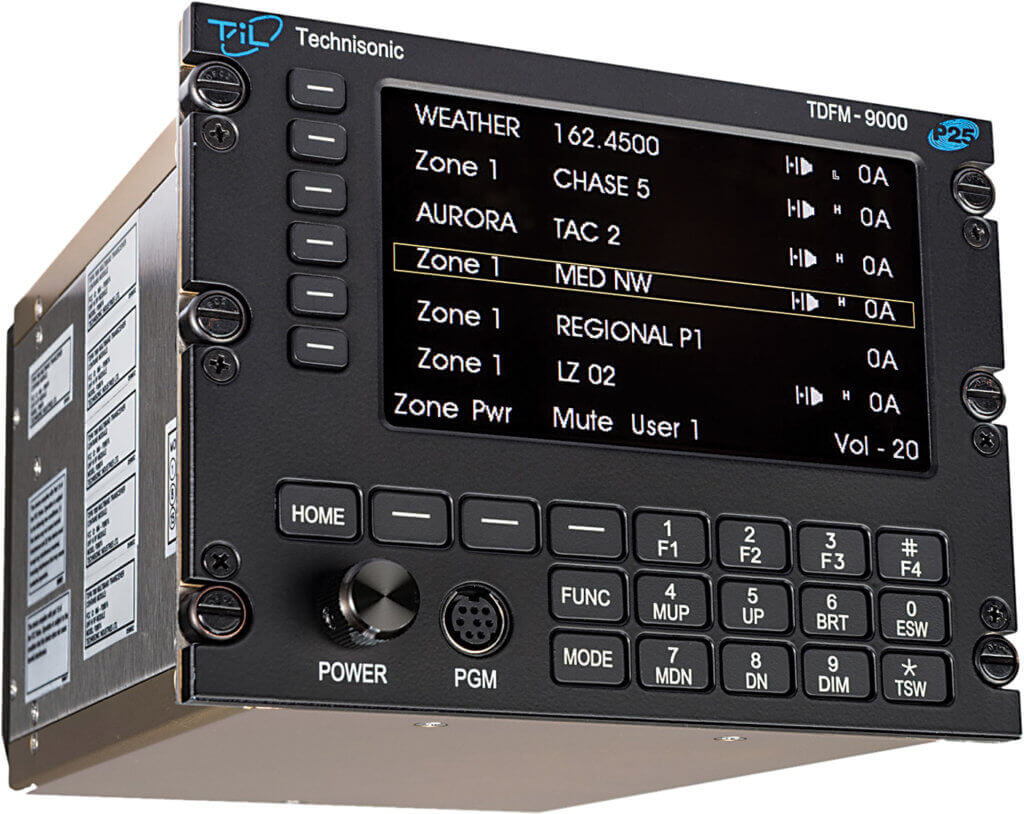
The analogue TDAP-611 system targets aircraft with less complex, though specialized communication requirements such as light EMS or observation missions.
“To a large degree these aircraft are weight-restricted, and to maintain their functionality they have to be able to lift so much weight,” said Jim Huddock, the company’s business development manager. “They don’t require some of the features generally associated with digital audio systems.” The TDAP-611 uses today’s technology to update Technisonic’s successful A-711 audio line, which has been serving the rotorcraft industry for more than a decade.
“Very much like a record player, the signal that comes into the system is analogue, and it stays analogue till it gets to your ear,” said Huddock. “It’s never converted. It’s just a better, warmer sound.”
The TDAP-711 is a digital system geared toward both complex and multi station aircraft and eliminates the need to run heavy, bulky wires into a central remote box or router.
“We’ve developed a system that gets rid of that router,” said Huddock. “It’s a logical starting point in that the main control head that goes in the aircraft is the master controller … and you can program that just by placing your headphones on. There’s no computer to connect to.”
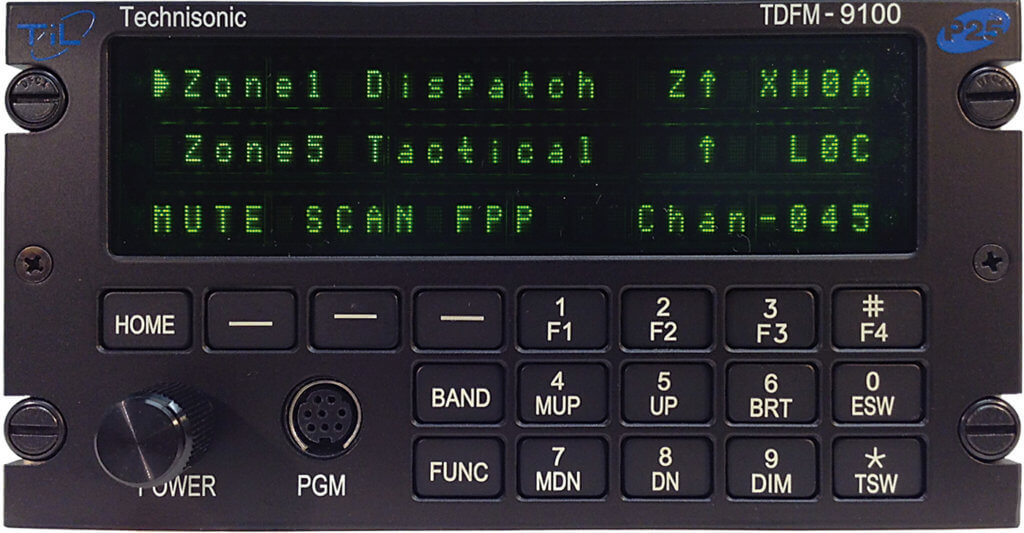
Both systems also feature the ability to operate audio panels in night vision goggle (NVG) and dark-cabin environments.
Technisonic has long established itself as the first choice in airborne civil communications. The 9000 series radios demonstrate the company’s complete commitment to operators and their missions. The 9000 series (9000, 9100, 9200, 9300) have been designed to support the bandwidths and protocol requirements of today’s most advanced land mobile and airborne communications systems.
For 2017 Technisonic has worked to continually improve and upgrade the 9000 series, recently adding the APX 8000 all-band module to create a more efficient, customizable and potentially more cost-effective system.
“Our customers have always been able to choose each module, what band it’ll cover, and what options are installed, be it trunking, encryption or a host of other protocols specified by the customer,” said Huddock.
“And with the new all-band modules, there’s no restrictions to it. They can say, ‘I want a VHF only,’ or they can say, ‘I want VHF and UHF,’ or they can say, ‘I want VHF and UHF and 800 available on this module,’ and we can do that.”
These improvements have been driven by customer requests, reflecting a core business philosophy that has been central to Technisonic’s evolution as a company.
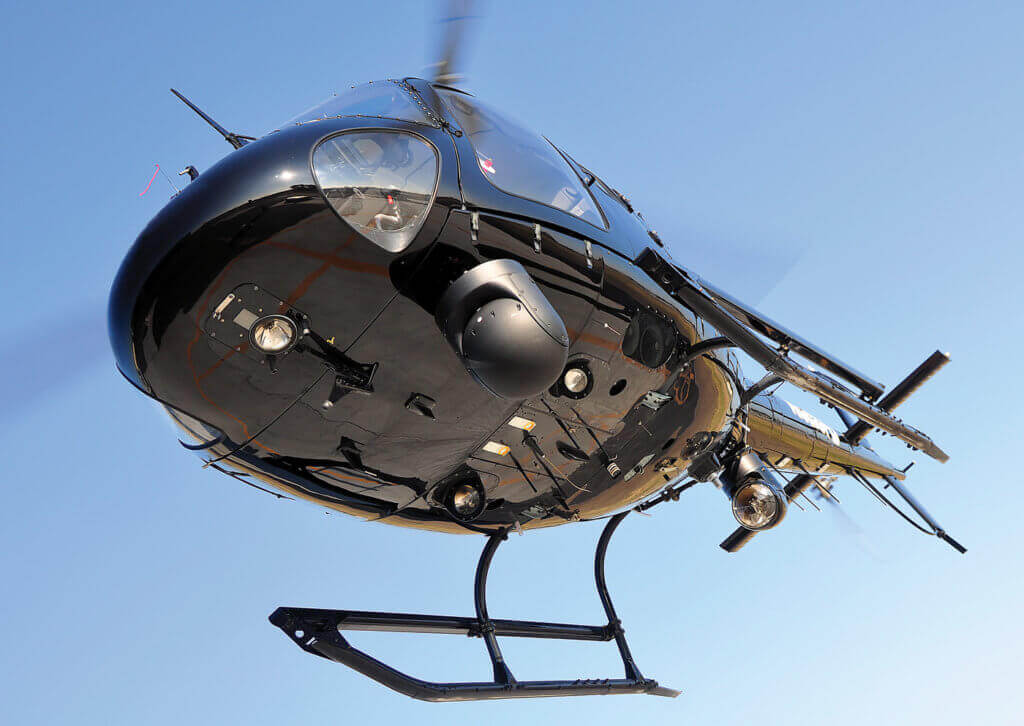
“The operators drive us,” said Huddock. “They’re the ones who tell us what works, what doesn’t — how things should happen and what capabilities they need. It’s a bottom-up instead of a top-down type of mentality.”
Technisonic’s product support commitment is also unprecedented in the industry. While inclusive of convenient repair and update solutions, it’s the emphasis placed on reliability and usability that truly directs its path.
“We take reliability very seriously. It drives all pieces of our business,” said Huddock. “Engineering to quality control, sales to support, our commitment is to the customer. If they do have a problem or if we find a feature that’s missing that these guys need, we’re pretty quick to address that.
“Our team is focused on the mission at hand. All of these aircraft we are placed in, whether it’s a federal aircraft, law enforcement, or an EMS operator, they really have two core mission requirements: Observe and communicate. And if they can’t communicate, the mission is scrubbed.
“You see a lot of amazing capability, zooming in from five miles away with camera systems and mapping systems, really cool technology. And it’s all awesome, but it’s all backboned with communication. Without the communication, the helicopter can’t go.”
If you would like to see your company featured in Insight, contact Derek Kast at derek@mhmpub.com.





